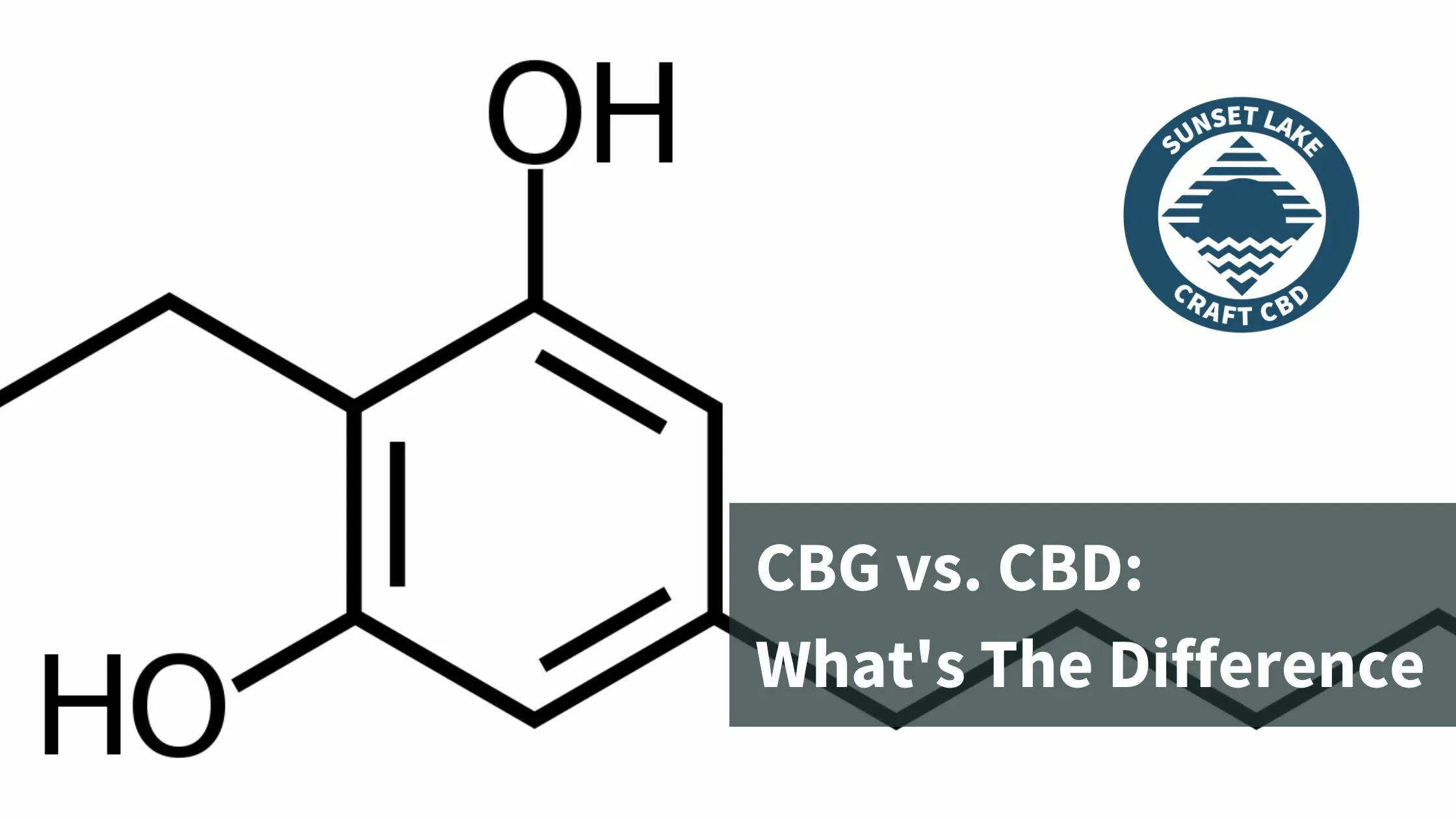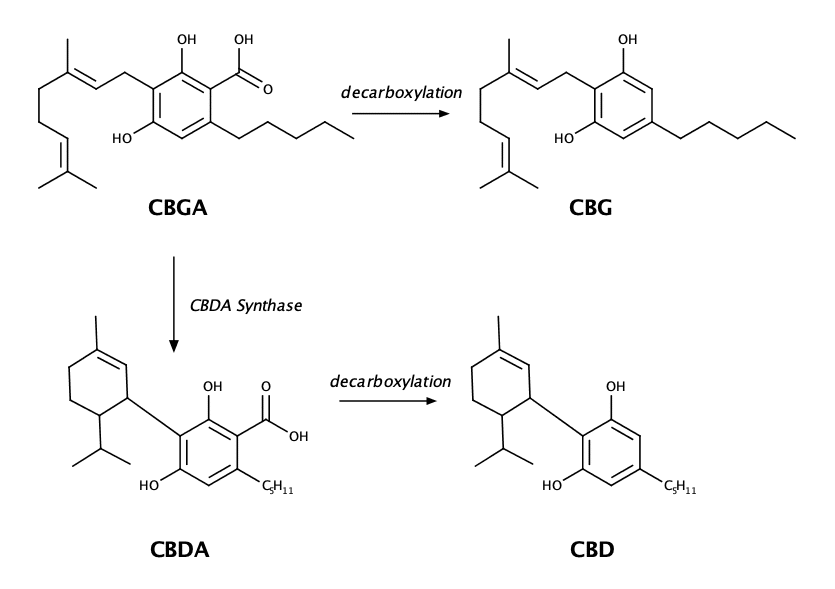No products in the cart.
CBG vs. CBD: What’s the Difference?

Key takeaways
- CBD and CBG are both cannabinoids produced by mature hemp plants, although CBD is considered a major cannabinoid while CBG is considered a minor.
- CBG is known as the “mother of all cannabinoids” because of its ability to turn into CBD, THC, and CBC.
- CBG’s effects profile isn’t well known yet, but some studies suggest that it may be an effective treatment option for several neurological disorders.
Table of contents
- What are CBG and CBD?
- CBG vs. CBD: ECS Interactions
- Benefits of CBD and CBG Use
- The Availability of CBG and CBD
- CBG and CBD: Trends, Research, and More…
Like its non-intoxicating cousin CBD, CBG— short for cannabigerol, is one of the 100+ cannabinoids produced by mature hemp and cannabis plants. It’s also now federally legal thanks to the 2018 Farm Bill.
In this post, we’ll be breaking down the differences between CBG and CBD, the similarities between the two, and cover the unique challenges and opportunities posed by CBG.
What are CBG and CBD?
What is CBG (Cannabigerol)?
We often refer to CBG as the “mother of all cannabinoids” because it is the precursor from which other cannabinoids are synthesized. In cannabis and hemp plants, CBG starts off in its acidic form as cannabigerolic acid (CBGA). Through the plant’s natural growth process, CBGA converts into other cannabinoid acids like THCA (tetrahydrocannabinolic acid) and CBDA (cannabidiolic acid) through a process called synthase.
We believe that synthase is not only an important step for cannabinoid production but also benefits the plant’s self-defense system. When CBGa turns into CBDa (or THCa), it also produces one hydrogen peroxide molecule, which fungi and bacteria tend to hate.

What Is CBD (Cannabidiol)?
CBD is a naturally occurring compound found in both hemp and marijuana plants, which are varieties of the Cannabis Sativa L plant. CBD is typically extracted from hemp due to its higher concentrations and legal status in many regions.
CBG vs. CBD: ECS Interactions
Endocannabinoid System (ECS)
The ECS is a network of receptors (CB1 and CB2), enzymes, and endogenous cannabinoids (endocannabinoids) that regulate various physiological processes, including pain, mood, appetite, and immune response.
We can nudge our ECS in different directions and help our bodies find balance when we consume phytocannabinoids, phyto meaning of the plant.
Receptor Interaction
CBD
CBD has a low affinity for CB1 and CB2 receptors, which are the primary receptors of the ECS. Instead, CBD acts as a facilitator and helps our ECS use more beneficial endocannabinoids.
CBD also interacts with other receptor systems, including serotonin receptors (5-HT1A), TRPV1 receptors (involved in pain perception), and PPAR-gamma receptors (implicated in anti-inflammatory effects).
CBG
CBG binds directly to both CB1 and CB2 receptors, though not very well. This direct interaction allows CBG to exert effects on the ECS more directly than CBD.3
CBG is also known to interact with other receptors, such as alpha-2 adrenergic receptors (involved in blood pressure regulation) and 5-HT1A receptors, which may contribute to its potential anti-anxiety and antidepressant effects.
Benefits of CBD and CBG Use
CBD
- Stress Relief: CBD’s interaction with serotonin receptors and its ability to increase anandamide levels contribute to its anxiolytic effects.
- Pain Management: By modulating TRPV1 receptors and inhibiting inflammatory mediators, we believe that CBD can help you manage pain and inflammation response.
- Epilepsy: CBD’s modulation of receptor activity and ion channels is crucial for its antiepileptic properties. CBD is such an effective antiepileptic that the FDA has already approved one medication, Epidiolex, to treat rare forms of epilepsy.
CBG
- Inflammation Response: CBG’s direct interaction with CB2 receptors, which are prevalent in the immune system, plays a significant role in its anti-inflammatory effects.
- Neuroprotection: CBG’s interaction with various receptors, including 5-HT1A and alpha-2 adrenergic receptors, may contribute to its neuroprotective effects.1
- Antibacterial: CBG’s potential antibacterial properties are being investigated, especially its effectiveness against antibiotic-resistant bacteria like MRSA.2
The Availability of CBG and CBD
A few factors, including demand, extraction and conversion technology, and hemp genetics, influence the availability of CBG (cannabigerol) and CBD (cannabidiol).
CBD
CBD products are widely available due to high consumer demand and favorable legal status in many regions. You can find CBD in health stores, pharmacies, online retailers, and even some supermarkets.
CBG
There’s a reason that CBG hasn’t enjoyed the same kind of adoration being given to CBD these last few years: CBG is difficult and expensive to produce.
CBGa, as mentioned earlier, is the precursor to several different cannabinoids found in hemp. So many, in fact, that after most of the synthases takes place, only <1% of CBG is left present in hemp as a percentage of dry weight.
Most of that CBGa in high-CBD hemp strains is turned into CBDa, which is then decarboxylated into our CBD. That’s by design.
CBG and CBD: Trends, Research, and More…
As of right now, academia is looking into CBD, CBG, and cannabinoids in general as a more natural alternative to pharmaceutical treatments.
We’re actively looking into CBD as a potential treatment for
- Anxiety and stress relief
- Chronic pain and inflammation
- Epilepsy and seizure management
- Neuroprotection
- Mood disorders
CBG, because it works slightly differently, is being studied for its
- Pain relief properties
- Neuroprotective properties
- Antibacterial properties
As CBG becomes more popular and, frankly, becomes a more affordable alternative to CBD, we expect to see it become a more prominent cannabinoid on the market.
Final Word on CBG and CBD
CBG and CBD are exciting new natural prospects for folks looking for alternatives to traditional Western pharmaceutical-focused medicine. Both are considered safe to use, and you ultimately may experience unintended benefits after trying them out.
However, before you add a new supplement to your regimen, check in with a healthcare provider and ensure they won’t interfere with your current medications.
To learn more about CBD, CBG, or any of Sunset Lake’s lineup of full-spectrum products, please see our shop page or get in touch with us using our contact page!
Sources
- Grinspoon, Peter. “Beyond CBD: Here Come the Other Cannabinoids, but Where’s the Evidence?” Harvard Health, Harvard University, 26 Sept. 2022, www.health.harvard.edu/blog/beyond-cbd-here-come-the-other-cannabinoids-but-wheres-the-evidence-2021032322190.
- Navarro, Gemma et al. “Cannabigerol Action at Cannabinoid CB1 and CB2 Receptors and at CB1-CB2 Heteroreceptor Complexes.” Frontiers in pharmacology vol. 9 632. 21 Jun. 2018, doi:10.3389/fphar.2018.00632
